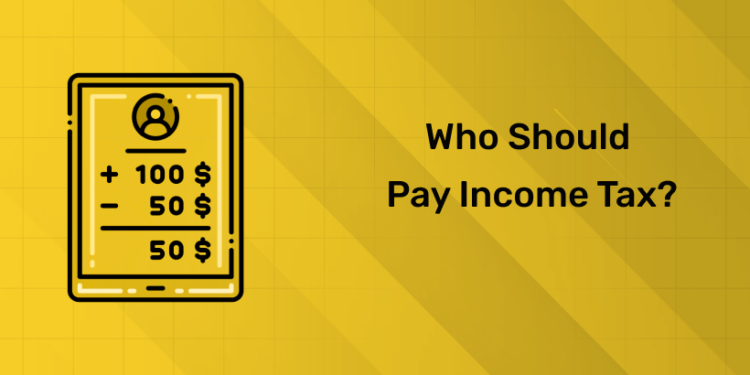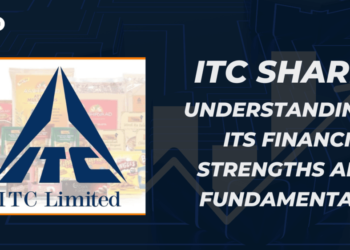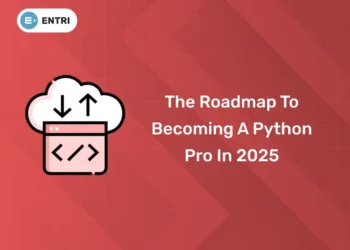Table of Contents
Income tax is one of the primary ways the Indian government raises money to provide public services like education, healthcare, infrastructure, and welfare programs. However, the debate over who should pay income tax and how much remains complex in India. With a growing economy, rising inequality, and a large informal workforce, India faces unique challenges in designing a fair tax system. In this blog post, we will discuss India’s current income tax system, and who should pay income tax, and whether changes are needed to ensure fairness and economic growth. We will also explore different viewpoints on how the tax burden should be distributed.
Practical Accounting Training for Real-World Success – Sign Up Now!
Who Should Pay Income Tax?
Income tax is a direct tax imposed by the government on income earned by individuals and entities. The tax is calculated based on the taxpayer’s earnings in a financial year (April 1st to March 31st). It is one of the primary ways the government collects revenue to provide public services such as healthcare, education, transportation, and welfare programs. Understanding who should pay income tax and how much to pay is important for all taxpayers in India.
In this guide, we’ll explore income tax slabs, who is required to pay, different tax regimes, and much more.
Income Tax Slabs
1: Accounting provides information on
In India, income tax is levied according to a progressive tax system. This means that tax rates increase as income increases, ensuring that higher-income earners pay a larger share of their earnings as tax.
Explanation of Tax Slabs for Different Income Levels
As of 2024, the income tax slabs under the old tax regime are as follows:
- Income up to ₹2.5 lakh: No tax
- Income from ₹2.5 lakh to ₹5 lakh: 5%
- Income from ₹5 lakh to ₹10 lakh: 20%
- Income above ₹10 lakh: 30%
For those earning above ₹50 lakh, additional surcharges apply.
Overview of New and Old Tax Regimes
The Indian government introduced a new tax regime in the Union Budget 2020, offering lower tax rates but without common deductions and exemptions. Taxpayers can choose between the old regime (with deductions like those for investments, house rent, etc.) and the new regime (lower rates, but without deductions). Here’s a comparison:
- Old Tax Regime: Higher tax rates, but allows various deductions (Section 80C, 80D, HRA).
- New Tax Regime: Lower tax rates but minimal exemptions and deductions.
Key Points:
- Taxpayers can choose between the old regime (with deductions) and the new regime (lower rates but no deductions).
- The new tax regime simplifies filing but may not be beneficial for those using many exemptions.
Who Must Pay Income Tax?
In India, individuals, Hindu Undivided Families (HUFs), companies, and other entities must pay income tax if their income exceeds the basic exemption limit.
Individuals Required to Pay Income Tax:
- Salaried Employees
- Self-employed individuals (freelancers, business owners)
- Companies and LLPs
- HUFs (Hindu Undivided Families)
The amount of tax payable is based on the income earned, investments made, and deductions available.
Mandatory ITR Filing Scenarios
Filing an Income Tax Return (ITR) is mandatory in certain scenarios, even if your income is below the taxable limit:
- If your gross total income exceeds the basic exemption limit (₹2.5 lakh for individuals under 60, ₹3 lakh for senior citizens, and ₹5 lakh for super senior citizens).
- If you have deposited more than ₹1 crore in a current bank account in a financial year.
- If you have incurred electricity expenses exceeding ₹1 lakh in a financial year.
- If you have foreign income or foreign assets.
- If you receive income from capital gains, property, or other taxable sources.
Key Points:
- Filing ITR is mandatory for individuals earning above the basic exemption limit or meeting certain financial thresholds.
- Even if no tax is due, ITR filing helps document income and allows claiming of tax refunds.
Income Tax for Senior Citizens
India offers special tax provisions and benefits for senior citizens to ease their financial burden during retirement.
Senior Citizens (Aged 60–79 Years)
- Basic exemption limit: ₹3 lakh (compared to ₹2.5 lakh for younger taxpayers).
- Senior citizens are also eligible for additional deductions under Section 80D for medical insurance premiums and under Section 80TTB for interest income.
Super Senior Citizens (Aged 80 Years and Above)
- Basic exemption limit: ₹5 lakh.
- Super senior citizens do not have to pay tax unless their annual income exceeds ₹5 lakh, providing significant tax relief.
Key Points:
- Senior citizens get a higher exemption limit and extra deductions.
- Super senior citizens (80+) enjoy even higher tax benefits with a ₹5 lakh exemption limit.
| Our Other Courses | |
| UAE Accounting Course | GST with Practical Accounting Course |
| Tally Training | PwC Certified Taxation and Accounting Course |
| ACCA Course | Zoho Books Training |
Rebates and Exemptions
Indian taxpayers can reduce their taxable income through rebates and exemptions, which lower the amount of tax they need to pay.
Common Rebates and Exemptions
- Section 80C: Allows deductions up to ₹1.5 lakh for investments in life insurance, provident funds, National Savings Certificates (NSC), and more.
- Section 80D: Allows deduction for medical insurance premiums (up to ₹25,000 for individuals, ₹50,000 for senior citizens).
- Section 24(b): Deduction on home loan interest payments (up to ₹2 lakh).
Rebate Under Section 87A
Individuals earning less than ₹5 lakh after deductions can avail a rebate of up to ₹12,500 under Section 87A, resulting in no tax liability for income up to ₹5 lakh.
Key Points:
- Deductions and rebates under various sections can significantly lower taxable income.
- Section 87A ensures no tax for income below ₹5 lakh after deductions.
Consequences of Not Paying Income Tax
Failure to pay income tax or not filing your tax return can lead to severe penalties and legal consequences:
Penalties for Not Filing ITR
- Late filing fees: A penalty of ₹5,000 is charged if you miss the filing deadline (₹1,000 if income is below ₹5 lakh).
- Interest on unpaid taxes: Under Section 234A, interest is charged at 1% per month for late payment of taxes.
Legal Action
- Prosecution: In cases of willful tax evasion, prosecution under Section 276C can lead to imprisonment ranging from 3 months to 7 years.
- Tax audits and investigations: Not filing or inaccurately filing tax returns can trigger an audit by the Income Tax Department, leading to more scrutiny of finances.
Key Points:
- Penalties and interest apply for late or non-filing of ITR.
- Severe cases of tax evasion can result in prosecution and imprisonment.
Practical Accounting Training for Real-World Success – Sign Up Now!
Conclusion
Income tax is an essential aspect of India’s financial system, helping the government fund public services while ensuring wealth redistribution. Understanding who must pay income tax, the available deductions and exemptions, and the consequences of non-compliance is crucial for all taxpayers. With the introduction of the new tax regime, taxpayers now have more flexibility, but it’s essential to evaluate which system—old or new—works best for their financial situation.
By complying with tax laws and filing returns on time, taxpayers contribute to national development and avoid potential penalties. India’s income tax system is designed to be progressive, ensuring that individuals and entities contribute fairly based on their income, while also providing relief through exemptions, especially for senior citizens.
Frequently Asked Questions
What is income tax?
Income tax is a tax levied by the government on the income earned by individuals, businesses, and other entities. The tax is calculated based on the amount of money one earns in a year.
Who is required to pay income tax in India?
In India, individuals who earn above ₹2.5 lakh annually are required to pay income tax. This includes salaried individuals, self-employed professionals, and businesses. The tax rate increases with higher income levels.
What are the current income tax slabs in India?
As of 2024, the income tax slabs for individual taxpayers are:
- Income below ₹2.5 lakh: No tax
- ₹2.5 lakh – ₹5 lakh: 5%
- ₹5 lakh – ₹10 lakh: 20%
- Above ₹10 lakh: 30%
Additional surcharges apply for those earning over ₹50 lakh.
Why should I pay income tax?
Paying income tax helps the government fund public services like healthcare, education, infrastructure, and welfare programs. It is essential for national development and ensures that everyone contributes to the functioning of society.











